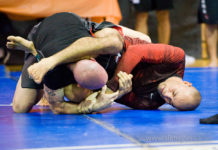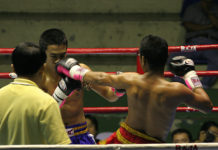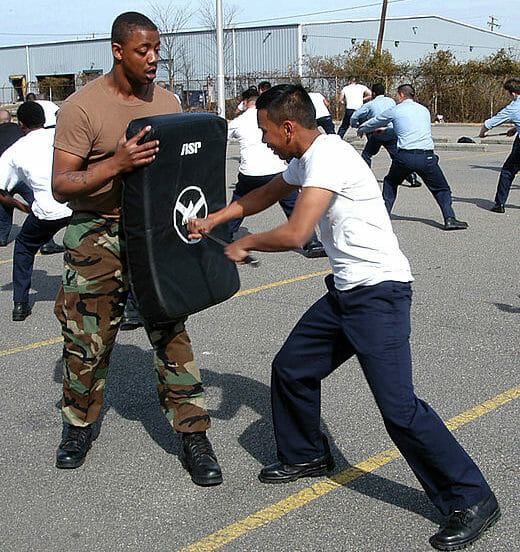If you’re like me and came up in a traditional school of jiu-jitsu, you were probably taught a couple of guard fundamentals. For passing, it was tried and true techniques like the double under-hook pass and the knee-slice pass. On the bottom, you started with closed guard. Posture control, the armbar, the triangle, the back take. Stuff like that.
If you learned any standing guard passes, it was almost certainly the bullfighter, or “toreando” pass.
Why don’t we learn standing guard passes first?
There are some good reasons why this is the standard progression of teaching guard and passing in BJJ. Closed guard is strong for self defense, it gives the best control. It’s also easy to learn (but hard to master), at least compared to some open guards. It has offensive options, but you can ignore them completely and just hold someone down.
It’s strange then, that we do not teach standing guard passes as the most basic pass. Like the closed guard, standing passes often are easier to learn than kneeling ones. They are better for self defense. They allow you to stay out of range of strikes and give an easy option to retreat. You also minimize the risk of being submitted.
To top it off, their a perfect counter to closed guard. So why aren’t standing passes being emphasized more to new students?
Simple reason: They’re too good at countering the closed guard.
We encourage knee passing so we can encourage closed guard.
Closed guard is an institution in BJJ. It’s part of the history of the art, and not going anywhere. Let’s face it, if every student was trained to pass on their feet first, the closed guard would take a backseat to better open guard counters.
Or, we would have to get much better at our stand-up game. Standing up is a great defense to when someone won’t get in the trenches with you. If everyone was using standing guard passes, students would quickly learn to stand up more.
But a gym full of students sparring on their feet makes teachers nervous. Space is at a premium at many schools, and injuries tend to occur more in the stand-up department.
So that leads us to where we are today, sparring from our knees and using pressure passing and closed guard. It was born out of practicality more than anything. When two partners start of their knees, half the work of getting someone in your guard is done already.
Yet, if you look at the pros who compete at the highest level, their is a huge emphasis on standing (especially in no-gi). Many high level competitors would rather get back to their feet than play guard at all.
Bypassing their greatest weapons
Take an informal poll of the white blue, and even purple belts at your academy. What are their best sweeps from the guard? What are their best submissions? Now ask yourself, how many of those techniques require you to be in their guard?
John Danaher once described the fundamental goal of jiu-jitsu (I’m paraphrasing) as luring your opponent away from their strongest areas and into your strongest areas. When you refuse to willingly dive into someone closed guard, you’ve already taken away some of their greatest weapons. And you’ve done so without any sort of technical skill, you just didn’t show up.
If you have your passing game dialed in on the feet, only a strong open guard can stop you. If your opponent doesn’t have that, their closed guard techniques won’t help them. So next time you slap hands with a closed guard killer, do yourself a favor and stand up.
The video above a has a great breakdown on Rafael Mendes passing the guard. Here’s another helpful one on the Chewjitsu channel.
I’m also working on a big statistical analysis of guard uses in white and blue belt matches at my blog, High Percentage.
















